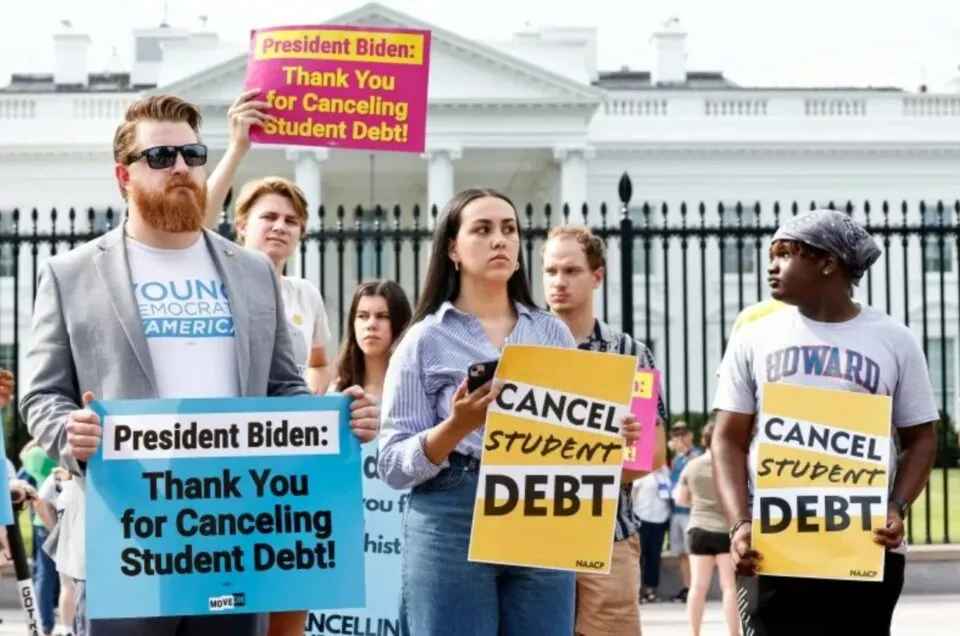In a move aimed at alleviating the financial burden on millions of Americans, President Joe Biden has unveiled an ambitious student loan forgiveness plan.
With the average student debt reaching unprecedented levels, this plan promises substantial relief to borrowers, ensuring increased access to higher education and a brighter future for students across the nation.
How will Biden’s Student Loan Forgiveness Help?
President Biden’s student loan forgiveness plan is set to revolutionize the education financing landscape. By implementing a series of measures, the plan aims to tackle the escalating student debt crisis, empowering individuals to pursue their dreams without the weight of insurmountable loans.
Expansion of Public Service Loan Forgiveness (PSLF) Program
Under President Biden’s plan, the PSLF program will see significant enhancements. Currently, this program forgives the remaining student loan balance for borrowers who have made 120 qualifying payments while working in public service. The proposed expansion seeks to increase the number of eligible professions, allowing more borrowers to benefit from loan forgiveness.
Income-Driven Repayment (IDR) Reforms
The plan aims to simplify and expand the IDR options, ensuring that monthly loan payments are manageable for borrowers. By lowering the income cap for repayment plans and reducing the percentage of discretionary income required, more individuals will be able to access affordable repayment options.
Targeted Loan Forgiveness for Low-Income Borrowers
Low-income borrowers who attended public colleges and universities or historically black colleges and universities (HBCUs) are set to benefit greatly from this plan. It proposes up to $10,000 in loan forgiveness for each year of national or community service, ultimately making education more accessible and equitable.
Community College and Minority-Serving Institution (MSI) Support
To boost affordability and increase graduation rates, President Biden’s plan intends to provide two years of tuition-free community college for all students. Additionally, MSIs, including HBCUs, tribal colleges, and Hispanic-serving institutions, will receive substantial funding to enhance educational opportunities and reduce financial barriers.
How will the Student Loan Forgiveness Impact Students?
President Biden’s student loan forgiveness plan has the potential to transform the lives of millions of borrowers. By reducing the burden of student debt, it will enable individuals to pursue higher education, invest in their careers, and contribute to the economy more effectively. Some key benefits include:
Debt Reduction and Financial Freedom
One of the most significant impacts of the plan is the reduction or elimination of student loan debt for borrowers. This relieves individuals from the burden of hefty monthly payments, allowing them to allocate their income towards other essential expenses, such as housing, healthcare, and savings for the future. Students will experience a newfound sense of financial freedom, enabling them to make long-term investments and improve their overall financial well-being.
Improved Credit Scores
By reducing student loan debt, the plan can positively impact borrowers’ credit scores. Lowering or eliminating outstanding loan balances can help individuals maintain a healthier debt-to-income ratio, leading to improved creditworthiness. This, in turn, opens up opportunities for better interest rates on mortgages, car loans, and other types of credit, fostering greater economic stability for borrowers.
Increased Education and Career Opportunities
Student loan forgiveness enables individuals to pursue advanced degrees, vocational training, or other educational opportunities that may have been financially unattainable before. With the burden of excessive debt lifted, students can explore fields of study and careers based on their passions and talents rather than solely on financial considerations. This expanded access to education can lead to higher-paying jobs, increased job satisfaction, and improved career prospects for graduates.
Entrepreneurship and Small Business Growth
Student loan forgiveness can also spur entrepreneurship and small business growth. With reduced financial obligations, borrowers may feel more inclined to take risks and start their own businesses. By eliminating the fear of overwhelming debt, the plan empowers individuals to pursue their entrepreneurial aspirations, fostering innovation and job creation.
Mental and Emotional Well-being
Mounting student loan debt often takes a toll on borrowers’ mental and emotional well-being. The stress and anxiety associated with high debt levels can impact the overall quality of life and hinder personal and professional growth. President Biden’s plan alleviates this burden, promoting better mental health outcomes and allowing students to focus on their studies, careers, and personal development.
Closing the Racial Wealth Gap
The plan’s targeted loan forgiveness for low-income borrowers and support for minority-serving institutions aim to address the racial wealth gap. Historically disadvantaged communities, including those served by historically black colleges and universities (HBCUs) and other minority-serving institutions, will benefit from increased resources and opportunities.
This can lead to greater financial stability, improved career prospects, and reduced disparities in wealth accumulation among marginalized communities.
Conclusion
President Biden’s student loan forgiveness plan represents a significant step towards addressing the mounting student debt crisis in the United States. By expanding existing programs, providing targeted loan forgiveness, and making higher education more affordable, this plan offers hope and relief to millions of borrowers.
As it progresses through the legislative process, it has the potential to reshape the educational landscape and empower a new generation of students to pursue their dreams without the burden of crushing student loans.




